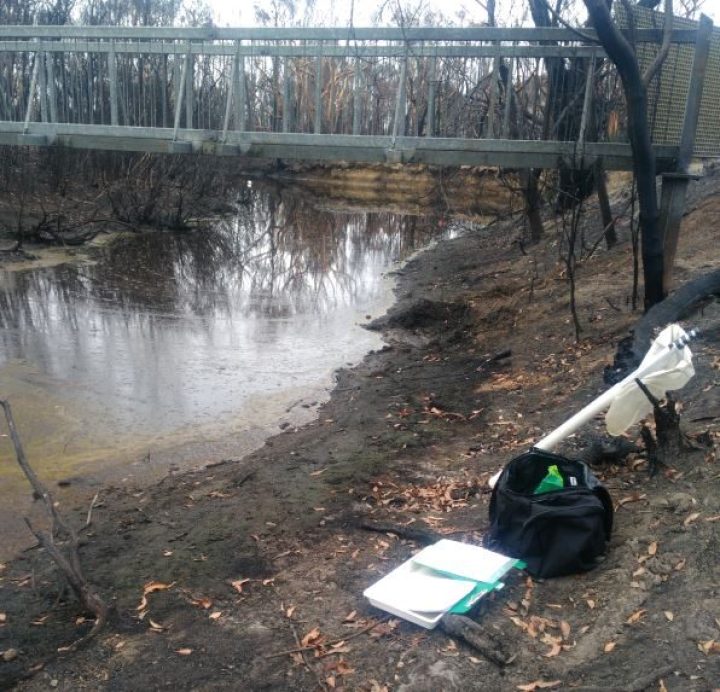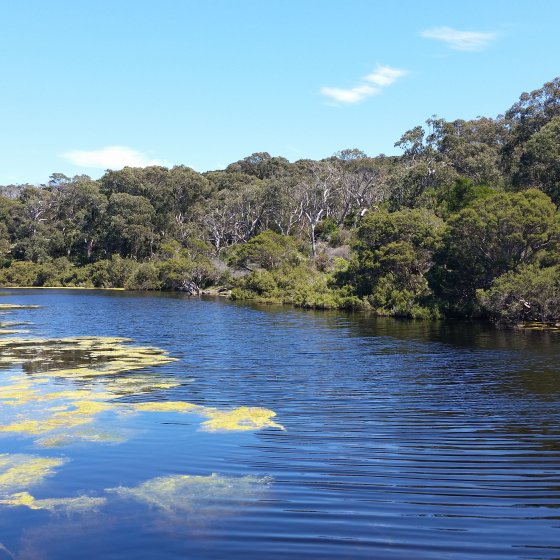- Home
- Environmental Themes
- Waters
- Pressures & Responses
- Climate Change
Climate Change
Temperature and Rainfall
Pressures
- Declining annual rainfall, lower spring rainfall, more drought, hotter temperatures and increased evaporation.
Impacts
- Reduced surface water volumes from lower rainfall and higher evaporation rates, potentially affecting:
- water for the environment, plants and animals impacting ecosystem health, habitats and biodiversity
- supply of water for human use from reservoirs, groundwater and surface waters
- poorer surface water quality due to a reduction in streamflow and less dilution of salt and pollutants
- waters in streams either increasing in temperature or drying up from evaporation
- exposure of acid sulfate soils.
- Declines in groundwater levels due to less recharge from rainfall. This may impact groundwater quality and baseflows of groundwater to surface waters.
- Increased need for alternative water supplies such as the operation of desalination plants. This may result in increased costs to consumers due to capital and operating costs, and risks to the environment from brine and other discharges (biocides and anti-scalants).
Responses
- Water resource planning is undertaken by DEW and Landscape SA to ensure that water is allocated to meet the needs of the environment and users.
- SA Water operates 11 desalination plants to produce potable water for the community, especially in times of drought. Desalination plants also aim to take the pressure off groundwater, surface water and River Murray supplies.
- Water sensitive urban design has been implemented in some areas to facilitate the recharge of groundwater and capture stormwater for use, which helps with cooling the environment and maintaining green space.
Opportunities
- Further reduce pressures on natural water resources so that more water is available for the environment by:
- increasing reuse of non-potable water such as stormwater, greywater and treated wastewater for irrigation and some domestic purposes
- supporting incentives to install rainwater tanks and other systems that capture and reuse rainfall in existing residential properties and businesses
- increasing the minimum size for rainwater tanks required in a new dwelling that is proportional to the dwelling and land size to enable the capture of more water. Currently it is only 1,000 litres
- expanding the use of managed aquifer recharge where treated stormwater is recharged back into groundwater for later use.
- Expand baseline groundwater monitoring across the state to ensure the impacts of climate change on groundwater levels and water quality can be identified and managed.
Extreme Rainfall
Pressures
- More intense heavy rainfall events.
Impacts
- Increased risk of:
- flooding and infrastructure damage
- damage to creek/river beds and banks
- impacts to plants and animals from flood waters
- pollutant and debris transport into waters.
Responses
- Planning tools and projects are supported by state government to manage and mitigate risks and impacts of floods to the environment and communities.
- Flood hazard mapping and assessment project provides new and enhanced flood mapping, and two Code Amendments to introduce a new flood hazard mapping and land use policy. This project will deliver more consistent and contemporary mapping of riverine and surface water flood hazards across the state.
Opportunities
- Construction of larger wetlands and stormwater capture devices to contain larger flows for reuse and capturing pollutants to minimise impacts to the downstream environment.
- Adoption of more MAR schemes to increase groundwater storage and reuse.
Bushfires
Pressures
- More dangerous fire weather increasing the risk of bushfires.
Impacts
- Bushfires can degrade water quality and alter the dynamics of aquatic ecosystems in a number of ways, particularly if heavy rainfall occurs soon after a bushfire.
- Reduction in water quality can be caused by ash entering waters, and changes to soil structure can increase the potential for erosion and sediment runoff into waterways.
- Loss of riparian vegetation, which leads to loss of habitat, increases in water temperature due to light exposure, and impacts to biodiversity and ecosystem health.
Responses
- Prescribed burns and cultural burns are undertaken to lessen the impact of bushfires should they occur.
- Monitoring of water quality and ecosystem health identifies impacts resulting from bushfires.
Opportunities
- Increase integration of Aboriginal knowledge and practices in undertaking cultural burns around sensitive aquatic habitats.

